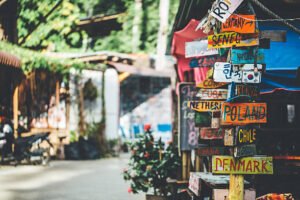How to Move to Puerto Rico.
Before relocating to this sunny, tax-friendly unincorporated U.S. territory, consider the following.
Puerto Rico is popular with visitors from the mainland for many reasons than only its stunning beaches, mild temperature, and welcoming population.
Additionally, the cost of living is significantly lower than almost anywhere else in the United States, and federal income taxes are lower without requiring renunciation of U.S.
citizenship and the majority of the population is completely at ease speaking English despite Spanish being the island’s most widespread language.
Considering Puerto Rico is an official part of the United States, moving there is a rather straightforward process for Americans. However, there are a few crucial things to be aware of before you relocate in order to make the most of your experience.
setting up residency
There are no entrance requirements for U.S. citizens since Puerto Rico is a U.S. territory; you won’t even need a passport. Puerto Rico’s very favorable tax structure, which eligible people may benefit from under Act 60, is one of the island’s main attractions.
In addition to receiving a variety of additional advantages, qualifying people or companies pay just a 4% corporation tax and are free from taxes on interest, royalties, and capital gains.
Before citizens may enjoy such benefits, there are a rigid set of standards that must be satisfied. You must also be a citizen of the United States and have no “tax home” outside of the territory.
You must spend 183 days of the tax year living in Puerto Rico. You must demonstrate that you have resided in Puerto Rico for at least 549 days during the course of the next three years.
Residents must own and occupy the main house in Puerto Rico, as well as give at least $10,000 annually to a recognized charity there, in order to be eligible for the full benefits.
Additionally, they cannot earn more than $3,000 a year from sources on the American mainland or spend more than 90 days in the rest of the country each year.
The “closer ties” test, which is the last criterion, asks applicants to demonstrate that they have no connections to either the United States or the rest of the world that are greater than their ties to Puerto Rico.
The test looks at a number of things, including where a person lives, where they bank, where their family resides, and where they are registered to vote.
Note that the IRS is paying special attention to new residents who migrate to the island to lessen their tax burden because of how generous these agreements are. You avoid getting into trouble with the taxman, be careful to adhere to the residency laws to the letter.
While significantly more challenging, relocation is nevertheless an option for non-citizens of the United States. A person must get a Green Card and then go through the regular difficult United States naturalization procedure, which includes background checks and citizenship exams, in order to benefit from the tax benefits of the territory.
Choosing a place to live
moved to the mainland Americans are drawn to the capital city of San Juan because it offers a level of life that is equivalent to that of the continental U.S., but is cheaper and has its own unique culture.
Condado is one of the city’s safest and most developed neighborhoods; it is well known for its retail malls, opulent apartment buildings, and convenient access to a breathtaking beach strip.
There is the well-known tourist destination of Dorado, which is more tranquil and serene but still includes well-liked facilities like beach resorts and golf courses, for people seeking a respite from the large metropolis.
Even one of Puerto Rico’s smaller islands, like Culebra or Vieques, provide unspoiled, less-visited Caribbean paradises if you want to escape the bustle of the main island.
Getting used to the Puerto Rican way of life
After you’ve chosen a place to live and moved in, it’s time to handle necessities like opening a bank account and getting a driver’s license. Banco Popular, the island’s biggest consumer bank, with several physical locations and ATMs.
You will need two forms of ID and evidence of your Puerto Rican residence in order to create a personal account. Your Social Security card will also be required by many branches.
Remember that compared to the rest of the United States, cash is far more often utilized for minor purchases than credit cards.
Even though the territory has varying degrees of reciprocity agreements with every U.S. state that enable you to swap your standard driver’s license for one issued by the island, many ex-pats have complained that the process may be extremely difficult. In addition to a variety of personal documents, you must also provide a local physician’s certification of your physical health. You must also go to a required course on drugs and alcohol.
last thoughts
Puerto Rico’s economic prospects are looking very promising after being severely damaged by Hurricanes Irma and Maria in 2017 and the COVID-19 outbreak. The $60 billion earmarked by Congress for the island’s economic growth will be prioritized for delivery by the Biden administration, according to a recent announcement.
According to certain authorities, Puerto Rico may eventually turn into “America’s Monaco.” It’s possible that there has never been a better moment to relocate to Puerto Rico due to the excellent quality of life and generous tax incentives. If you’re interested in learning more about relocating to or investing in this idyllic island,
How To Get A Portugal Golden Visa
Top 10 Safest Countries To Live In
Top 10 Nations With The Best Quality Of Life




